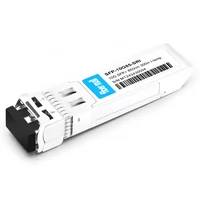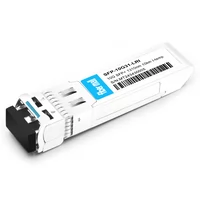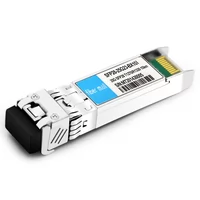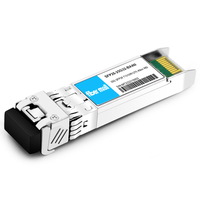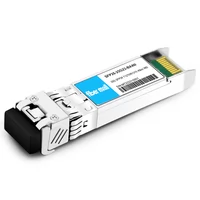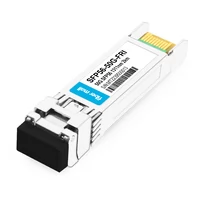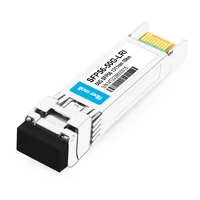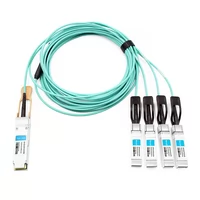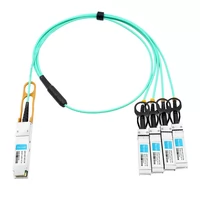In addition to the most common commercial grade, we can also see extended-grade and industrial-grade options when purchasing optical modules, depending on the operating temperature. Why do optical modules need to be divided into so many temperature levels, and what are the differences between them? As one of the most important parameters of an optical module, the operating temperature can affect other parameters. When the ambient temperature of an optical module changes, other parameters such as its operating current will also change, which will affect its normal transmission. Extended-grade and industrial-grade optical modules are designed to solve this problem. The most common optical modules are C-TEMP, and their normal operating temperature ranges from 0 to +70℃. E-Temp ranges from -20℃ to +85℃. The I-Temp works at temperatures ranging from -40℃ to +85℃, enabling it to work in extremely high or ultra-low temperatures. In addition, industrial optical modules must be designed with scene-hardened components in terms of electrical components and enclosures to ensure the service life of the modules.
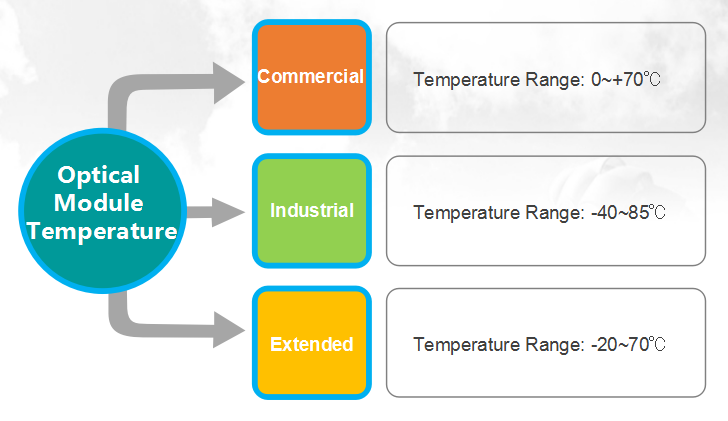
The difference between different temperature levels of optical modules
The temperature resistance of the chip is different
Commercial grade optical modules are 0℃~70℃, the extended grade is -20℃~+85℃, industrial grade optical modules are -40℃~85℃, the same as can support working temperature.
Different testing methods
Commercial-grade optical modules only need to be tested for normal temperature aging, while industrial-grade optical modules need to be tested for high and low-temperature aging.
Price difference
Due to the physical cooling and temperature compensation of industrial optical modules, the raw material cost and manufacturing cost increase. Therefore, when the transmission rate and wavelength are the same, the price of industrial optical modules is usually higher than that of commercial optical modules, as shown in the following table:
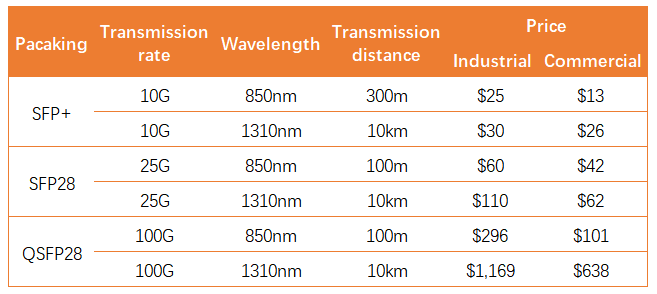
Different application scenarios
Commercial optical modules: It is the most common and widely used product in the market. It is generally used in network environments such as enterprise networks, data centers, and computer rooms.
Extended optical modules: It is used in relatively harsh environments with large temperature differences, such as remote mountain areas and tunnels in the wild.
Industrial optical modules can withstand lower temperatures than extended-grade optical modules. Industrial optical modules are generally used with industrial-grade Ethernet switches and are used in industrial Ethernet applications in factory automation, railway and intelligent transportation systems (ITS), power facility substations, Marine, oil, gas, mining, and other industries. Industrial optical modules can be durable and have the stable transmission in harsh working environments.

How to make optical modules meet industrial temperature standards?
Hardware Compliance
The chips and lasers used in industrial optical modules must be made of products that meet industrial temperature levels and require high-temperature heating when conducting tests.
Temperature compensation
When the industrial optical module operates at a low temperature below zero, in order to ensure the stable transmission power of the optical module, temperature compensation must be carried out to ensure the normal operation of the optical module at a low temperature.
Physical cooling
The industrial optical module must have a self-cooling function to meet stable operation at high temperatures. The heat generated by the laser is dispersed as soon as possible by using thermal silica gel for physical cooling.
FiberMall’s complete industrial temperature control design solution
Industrial grade key chip selection
- Chip selection is needed to meet industrial-grade temperature requirements.
- 25G LD chip is AFCD-V61XT/BROADCOM, industrial grade VCSEL.
- 100G LD chip is AFCD-V64XT/BROADCOM, industrial grade VCSEL.
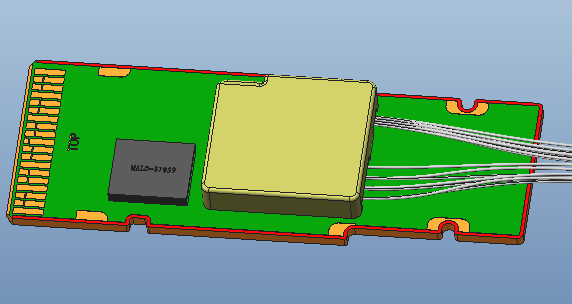
Industrial-grade optical device design
- Optical device design to meet the industrial-grade working environment, to ensure smooth optical power under extreme conditions of high and low temperatures.
- COB solution with the embedded copper solution at the bottom for better heat dissipation.
- Add heating resistor design, in order to meet the low temperature -40 ℃ work.
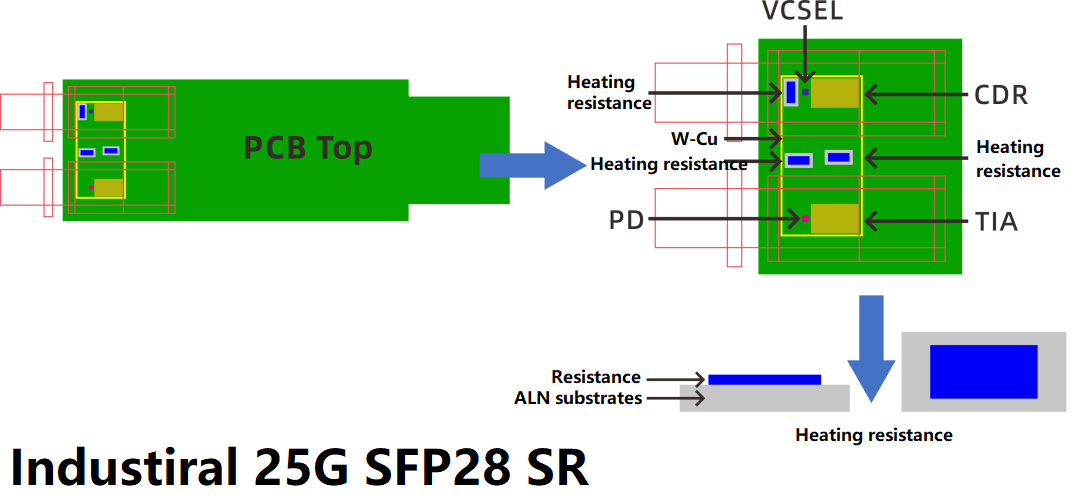
Industrial-grade structure design
- The internal structure of the optical modules is designed for optimal heat dissipation, guaranteed by thermal design simulation.
- The use of relatively large internal silicone heat sinks.
- The surface roughness of the industrial-grade optical module shell is required to be higher (smoother), otherwise, it will affect the contact with the heat sink, resulting in poor heat dissipation.
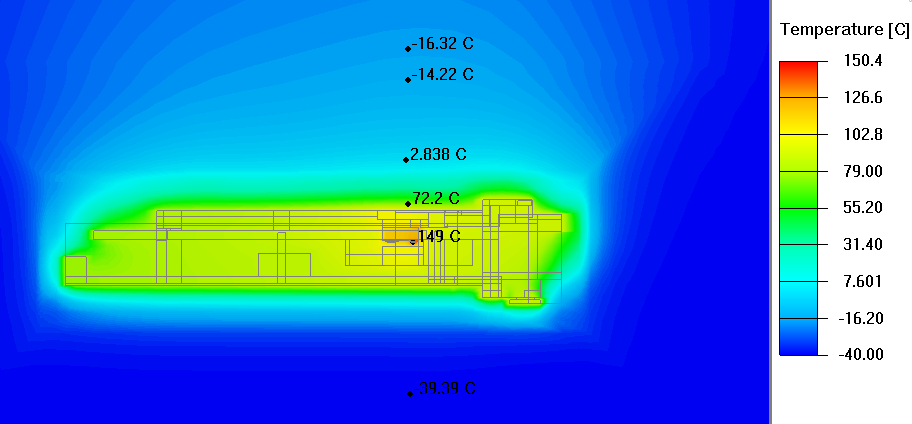
Industrial-grade software temperature compensation
- One of the characteristics of laser is that the output power varies with the change of temperature, the excellent wide temperature compensation software control is particularly important.
- Since there is no automatic temperature control TEC circuit in VCSEL, the temperature monitoring system must be used to monitor and compensate various parameters in real-time when designing the module circuit, so as to ensure the extinction ratio and luminous power stability of the optical module and ensure the normal operation of the optical communication system.
- It will take technicians a lot of time to find the optimum compensation parameters with each increase or decrease of 5 degrees as a node, and then write the results into the corresponding IC (chip) of the optical module, thus increasing the production time and increasing the cost of industrial products.
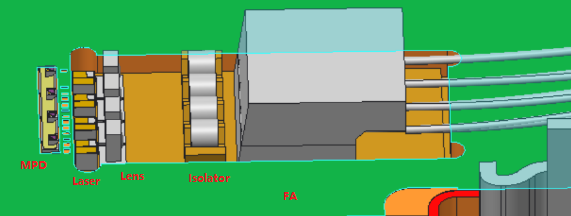
Industrial production process design
- Industrial optical module batch production PVT verification yield:
- If the product meets more than 90% yield, the BOM is defined as an industrial-grade product.
- Industrial thermal simulation design, according to the latest layout and heat dissipation scheme to evaluate whether the current heat dissipation scheme meets the requirements
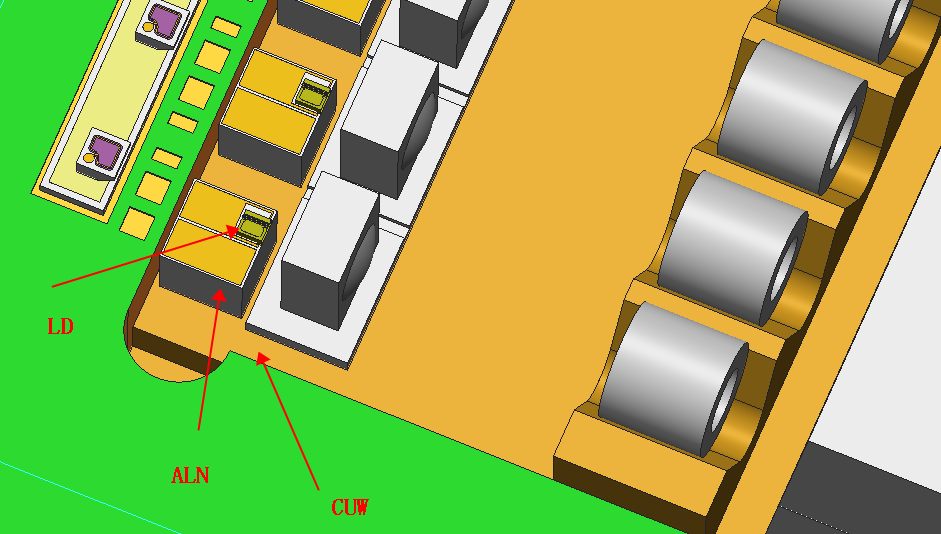
How to choose between industrial and commercial optical modules
As mentioned above, the operating temperature range of the industrial optical module is larger than that of the commercial optical module, and the performance is more stable.
Therefore, in outdoor environments with large temperature differences, such as outdoor base stations, industrial optical modules must be selected. Compared with commercial-grade optical modules, it has higher security and reliability. However, in indoor environments where the temperature difference is relatively stable, such as computer rooms, both industrial and commercial optical modules can meet the actual application requirements. However, considering the wiring cost, commercial optical modules can be selected.
Practical application case
5G base station system interconnection application requirements
Baseband product interconnection is a complex industrial application scenario. The ambient temperature ranges from -40°C to +85°C, and it may be an external environment of high humidity, high salt, and high fog. Therefore, a complete combination of air tightness and temperature is required.
In addition to the external environment requirements, the 5G base station system also requires the ability to flexibly group the network to save resources, and the design of the baseband board 100 to 4×25G interconnection, so the requirement of flexible interoperability between the baseband board of 100G MPO interface and other single 25G baseband board interconnection is put forward, and the wiring in the middle can be flexibly designed by the wiring engineers.
Selected products: FiberMall 100G AOC
FiberMall’s 100G QSFP28 to 4 x 25G SFP28 HAOC is an industrial-grade, tight active cable designed for 5G Open RAN fronthaul applications. It supports the two-way transmission of four 25GE/eCPRI signals using multi-mode fiber. Maximum transmission distance up to 100 meters (OM4).
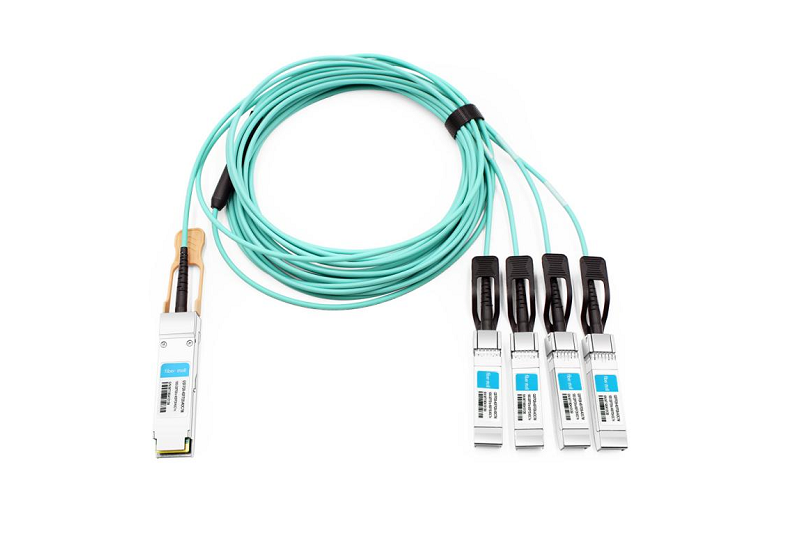
Table of Contents
ToggleRelated Products:
-
 SFP-10G85-SRI 10G SFP+ SR 850nm 300m LC MMF DDM Industrial High Temperature Transceiver Module
$13.00
SFP-10G85-SRI 10G SFP+ SR 850nm 300m LC MMF DDM Industrial High Temperature Transceiver Module
$13.00
-
 SFP-10G31-LRI 10G SFP+ LR 1310nm 10km LC SMF DDM Industrial High Temperature Transceiver Module
$20.00
SFP-10G31-LRI 10G SFP+ LR 1310nm 10km LC SMF DDM Industrial High Temperature Transceiver Module
$20.00
-
 SFP28-25G32-BX10I 25G BX BIDI SFP28 TX1330nm/RX1270nm 10km LC SMF DDM Industrial Transceiver Module
$50.00
SFP28-25G32-BX10I 25G BX BIDI SFP28 TX1330nm/RX1270nm 10km LC SMF DDM Industrial Transceiver Module
$50.00
-
 SFP28-25G23-BX10I 25G BX BIDI SFP28 TX1270nm/RX1330nm 10km LC SMF DDM Industrial Transceiver Module
$50.00
SFP28-25G23-BX10I 25G BX BIDI SFP28 TX1270nm/RX1330nm 10km LC SMF DDM Industrial Transceiver Module
$50.00
-
 SFP28-25G32-BX40I 25GBASE SFP28 BIDI ER TX1310nm/RX1270nm 40km LC SMF DDM Industral Optical Transceiver Module
$200.00
SFP28-25G32-BX40I 25GBASE SFP28 BIDI ER TX1310nm/RX1270nm 40km LC SMF DDM Industral Optical Transceiver Module
$200.00
-
 SFP28-25G23-BX40I 25GBASE SFP28 BIDI ER TX1270nm/RX1310nm 40km LC SMF DDM Industral Optical Transceiver Module
$200.00
SFP28-25G23-BX40I 25GBASE SFP28 BIDI ER TX1270nm/RX1310nm 40km LC SMF DDM Industral Optical Transceiver Module
$200.00
-
 SFP56-50G-FRI 50G SFP56 FR 1311nm PAM4 Duplex LC SMF 2km DDM IND Optical Transceiver Module
$330.00
SFP56-50G-FRI 50G SFP56 FR 1311nm PAM4 Duplex LC SMF 2km DDM IND Optical Transceiver Module
$330.00
-
 SFP56-50G-LRI 50G SFP56 LR 1311nm PAM4 Duplex LC SMF 10km DDM Optical Transceiver Module
$330.00
SFP56-50G-LRI 50G SFP56 LR 1311nm PAM4 Duplex LC SMF 10km DDM Optical Transceiver Module
$330.00
-
 QSFP28-4SFP28-AOC5M 5m (16ft) 100G QSFP28 to Four 25G SFP28 Active Optical Breakout Cable
$176.00
QSFP28-4SFP28-AOC5M 5m (16ft) 100G QSFP28 to Four 25G SFP28 Active Optical Breakout Cable
$176.00
-
 QSFP28-4SFP28-AOC10M 10m (33ft) 100G QSFP28 to Four 25G SFP28 Active Optical Breakout Cable
$185.00
QSFP28-4SFP28-AOC10M 10m (33ft) 100G QSFP28 to Four 25G SFP28 Active Optical Breakout Cable
$185.00

